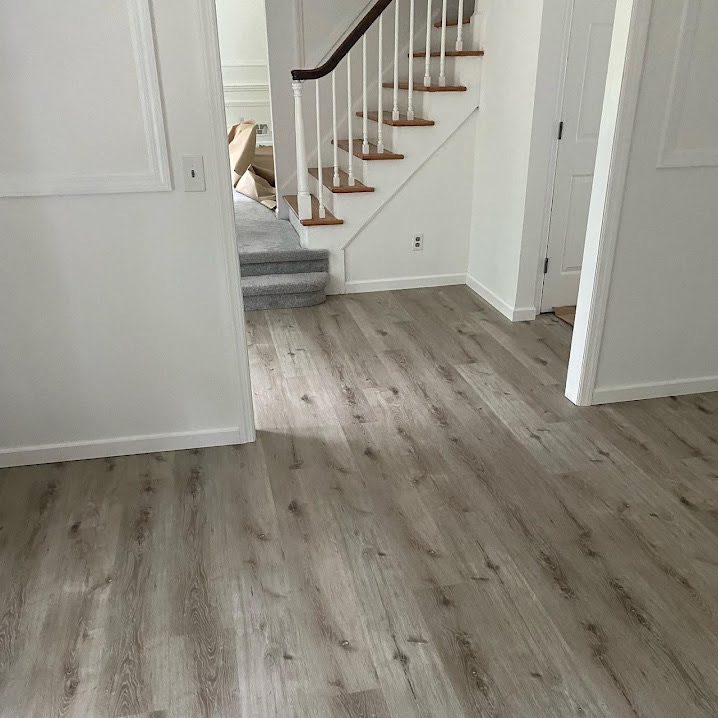Waterproof Luxury Vinyl Care
Highly abrasive scrubbing tools are not recommended, as they can damage your flooring.
Never use ammonia or bleach to clean your Resilient Flooring/Vinyl Flooring.
Due to the high temperatures, steam mops may cause damage to Resilient/Vinyl Flooring. Review the manufacturer guidelines for your flooring before using a steam mop.


To Prevent Scuffs When Moving Furniture
How to Treat Stains & Spills on Resilient/vinyl Flooring
Here are specific steps for challenging spills and stains. Unless stated otherwise, use a clean, white cloth or towel when cleaning Resilient/Vinyl Flooring products. Always rinse the area with clean water as your final step.
Common causes include blood, catsup, mustard, cleaners, dyes, food, candy, juices, grass, rust, and pet accidents. To remove these and more, follow these steps:

Clean the Area With Vinyl Flooring Cleaner
Follow These Steps to Remove the Spill
Gently rub the area with your finger, or an eraser (avoid using sharp items, which can scratch your flooring.
Things that Won't Wipe Up
Resilient/Vinyl Flooring has a protective film. But there's some stuff that just won't come off easily. Glue, asphalt, chewing gum, oil, grease, candle wax, and tar are hard to remove. Follow these simple steps to get stubborn stains off your Resilient/Vinyl Flooring.
